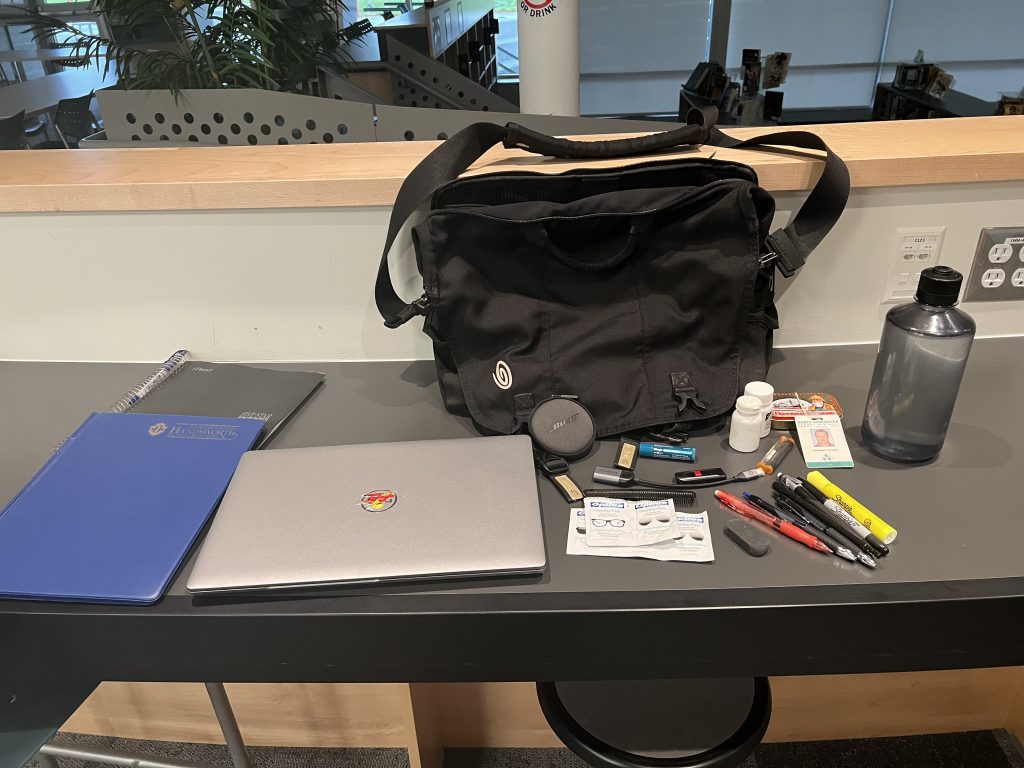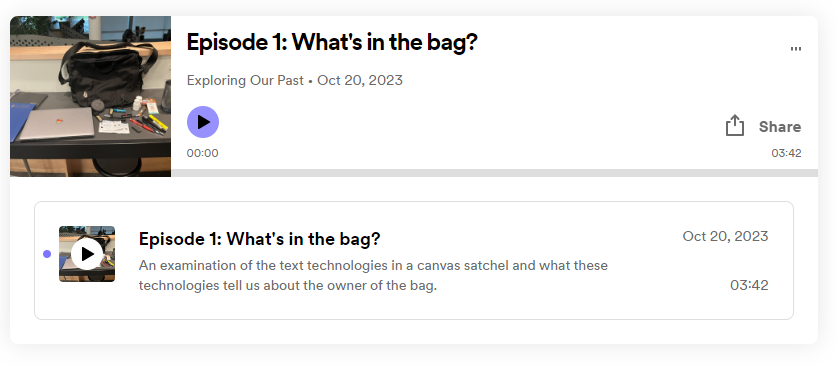Our task this week was to remediate, or transform, our response to our first week’s task “What’s in Your Bag” into a different semiotic mode. Additionally, we were given the parameter to make the delivery of the task in an audio format, or at least not primarily visual.


https://spotifyanchor-web.app.link/e/3A0FgAuP3Db
For this task I chose to create a podcast (Click on the link or podcast image above) as there are not many things that have a more auditory focus than a podcast, and people certainly don’t want to hear me sing J. It was an interesting process as I have never recorded, or produced a podcast before, I have recorded voice-overs for videos and slideshows, but nothing like this. My aversion to hearing a recording of my own voice, second only to seeing pictures or videos of myself, made the task more challenging for me personally – this was also one of the reasons that I chose to keep the recording as short as possible to have less audio to edit and listen too. On a side note, I found that during remote teaching in 2020 I preferred to record live lessons to students, rather than pre-recording lessons, as I was less concerned with ums, ahs and other filler words and less self-conscious during a live presentation that I was when prerecording and making multiple takes to try and get it “perfect”.
To guide the format and content of my podcast I chose the last question of Task 1 as my jumping off point, with a podcast of a historian looking at my bag and its contents to gain an understanding of our time period. It is important to point out that I used this theme to present the same information as I did textually in Task 1, future archeologists and historians would likely not make the same conclusions about the meanings behind the different technologies in my bag as they would not have my same life experiences (The New London Group, 1996, p. 76). While the image, or visual, stayed the same, the audio of the podcast replaced the text of the original task, potentially widening the audience by including those who are not comfortable with large bodies of text, or who make meaning more easily from audio sources.
In my classroom, I tend to rely on a combination of most of the different forms of literacy that The New London Group (1996) refers to as grammars, text, audio, images, video and gestures play an active role in most of my lessons, and certainly more than one in every lesson to promote/provoke meaning making with my students (pp.74-80). To reduce it to just one was a challenge, but I wanted to keep with the objective of our instructions as much as possible, specifically to keep my delivery in an audio format, but if that specification had not been given, I would likely have created some format of video to maximize the number of literacies that were being engaged in the audience, making my product accessible and inclusive to the largest possible audience. A video would have allowed me to zoom in, or focus, on the different items that were being discussed so that the viewer would have a visual of what was being discussed and not have to either refer back to the picture, or create a mental picture, thereby reducing the cogitative load and allow for deeper reflection of what is being presented. Video would also provide subtitles for the audience who may be hearing impaired, subtitles can also be very beneficial for those who are learning English, or for whom it is not their primary language.
This task, like many others in the course, really made me think about the ways in which I present, or share, information, pushing me beyond my comfort zone, and not just by making me listen to my own voice 😉 . By stripping away the visual, be it text or images, I really had to focus on making explicit choices about what I wanted to audience to hear and make meaning from. As I mentioned in Task 3: Voice-To-Text, I am not a trained orator, or story teller who can rely on memory alone and as such I scripted out exactly what I wanted to say to ensure my intended message was presented with the minimum number of filler words, whether my message is received as intended depends, like all things, on the audience and their life experiences.
References:
The New London Group. (1996). A pedagogy of multiliteracies: Designing social futures. Harvard Educational Review 66(1), 60-92. http://newarcproject.pbworks.com/f/Pedagogy%2Bof%2BMultiliteracies_New%2BLondon%2BGroup.pdf
